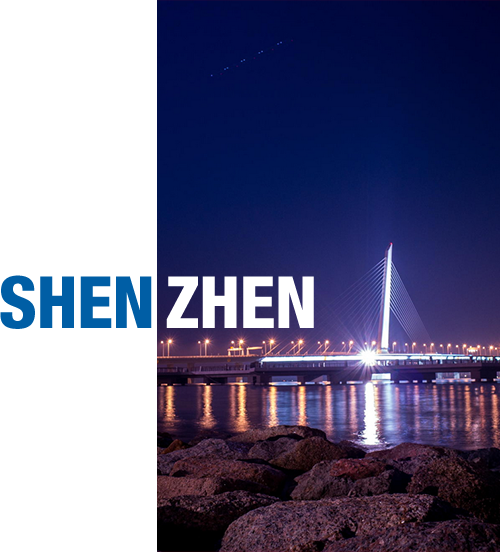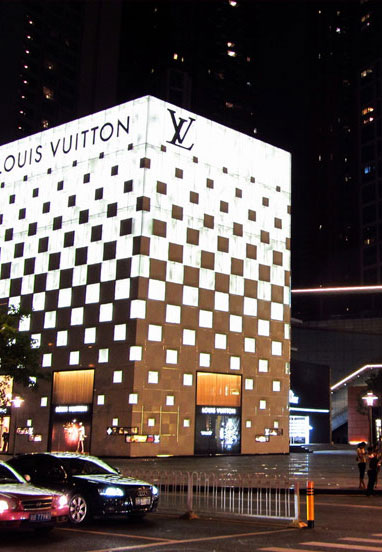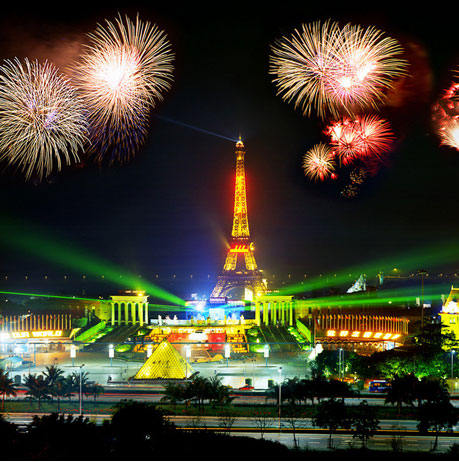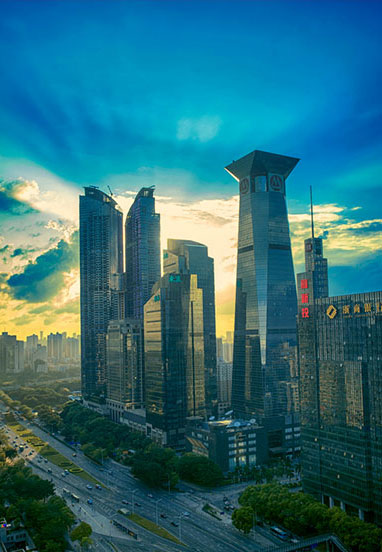Shenzhen is a coastal city in southern China, bordering Hong Kong. It has been called the window to China's reform and opening up. Young, fashionable, creative, dynamic,Shenzhen is a popular tourist destination as well as a great place to start a business. This is a place where dreams can come true. People here believe that nothing is impossible.
Shenzhen is a coastal city in South China, adjoining Hong Kong. Its longitude lies between 113.46 and 114.37 degrees east, and its latitude between 22.27 and 22.52 degrees north. Sitting south of the Tropic of Cancer, it is in southern Guangdong Province. Demarcated from Hong Kong by the Shenzhen River in the south, it is bordered by Dongguan and Huizhou in the north, Daya Bay and Dapeng Bay in the east and the Lingding Sea and the mouth of the Pearl River in the west.
Shenzhen has a subtropical marine climate. The weather is generally temperate to mild, with plenty of rain and sunshine. The annual average temperature is 22.4 degrees Celsius. A total of 355 days a year are frost-free. The yearly rainfall totals 1,933 millimeters and the average annual number of hours of sunshine is 2,120.
The earliest-known records bearing the name "Shenzhen" date from 1410, during the Ming Dynasty (1368-1644). Shenzhen became a township at the beginning of the Qing Dynasty (1644-1911). Local people called the drains in paddy fields "zhen" or "chong." Shenzhen literally means "deep drains" because the area used to be crisscrossed by rivers and streams---and still is, today---with deep drains in the paddy fields. Shenzhen is also known as "Roc City" because maps of the city's outline resemble a flying roc with its wings spread.
The city of Shenzhen was established in 1979. In August of the following year, the country's first special economic zone was established here.


Human activity in the area dates back more than 6,700 years. The area was founded as a county 1,700 years ago and is home to 600-year-old cultural relics such as Nantou Ancient City and Dapeng Fortress. The Hakka people migrated to the area from central China about 300 years ago.
There has been migration to southern Guangdong and what is now Shenzhen since the late Southern Song Dynasty (1127-1279), but the population increased dramatically after the city of Shenzhen was established. By the end of 2015, the permanent resident population reached 11.38 million, of which 3.55 million had permanent hukou.


Shenzhen is a sub-provincial city. It has direct jurisdiction over eight districts and two new areas: Luohu, Futian, Nanshan, Yantian, Bao'an, Longgang, Pingshan and Longhua districts, and Guangming and Dapeng new areas. The Central Government expanded the special economic zone to cover the whole city on July 1, 2010.
Shenzhen is the only city in Guangdong where Mandarin is the dominant language, because of its huge migrant population from all over China. Many public service employees, professionals and businesspeople speak English too. Most of the young people speak English and Cantonese. The Shenzhen Speaks Foreign Languages campaign is conducted across the city to encourage more residents and government employees to learn to speak foreign languages.
Shenzhen Party chief Ma Xingrui delivered a report at the sixth municipal congress of the CPC on May 26, 2015. The report laid out Shenzhen's blueprint for the next five years, calling for the special economic zone to lead the country's reform and opening up. The report also urged the city to establish an indigenous innovation demonstration zone and become a national economic hub, an international city with bigger competitiveness and influence, and a happy city with higher living standards.